Art World
The Harrowing, Inspiring True Story of Mark Hogancamp, the Outsider Artist Who Inspired Steve Carell’s New Film
Before the movie hits theaters this December, read up on the true-story background of the artist's harrowing life.
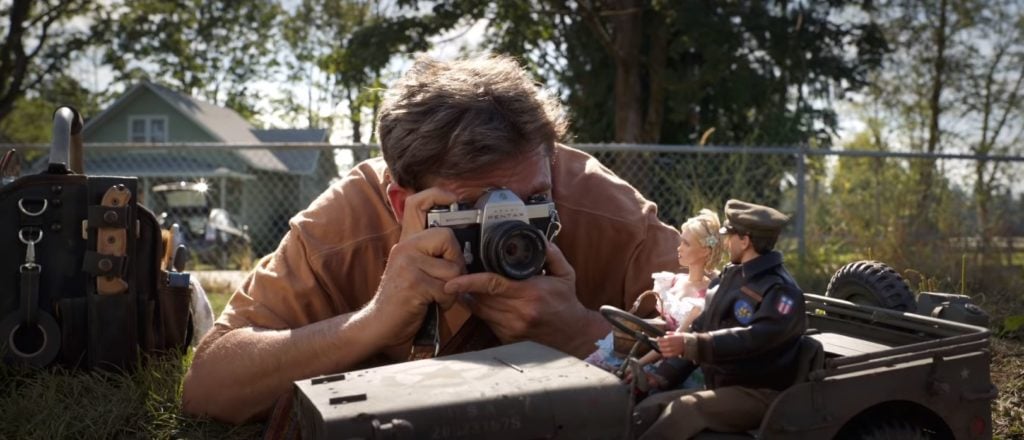
Before the movie hits theaters this December, read up on the true-story background of the artist's harrowing life.

Caroline Goldstein

Just in time for the holidays, Hollywood is rolling out a heartwarming tale about overcoming adversity through art.
Welcome to Marwen is based on the life and artwork of Mark Hogancamp, a hate-crime survivor who turned to art as a form of therapy. In 2000, to help him cope with the fallout of an assault that saddled him with crippling psychological trauma, he created a fictional, 1:6 scale World War II town christened Marwencol, populated with dolls inspired by his real-life friends, neighbors, and even the men who attacked him. In 2010, he was the subject of Jeff Malmberg’s award-winning documentary named after the imaginary town.
The Hollywood adaptation is helmed by Robert Zemeckis, best known as the creator of classics such as Back to the Future (1985), Who Framed Roger Rabbit (1988), and Forrest Gump (1994), which earned him an Oscar in 1995. Steve Carell, who plays Hogancamp, is joined by a star-studded cast featuring Janelle Monáe, Diane Kruger, and Leslie Mann.
Before you catch the silver-screen version of Hogancamp’s life, here are a few things to know about the true story that inspired the cinematic turn.
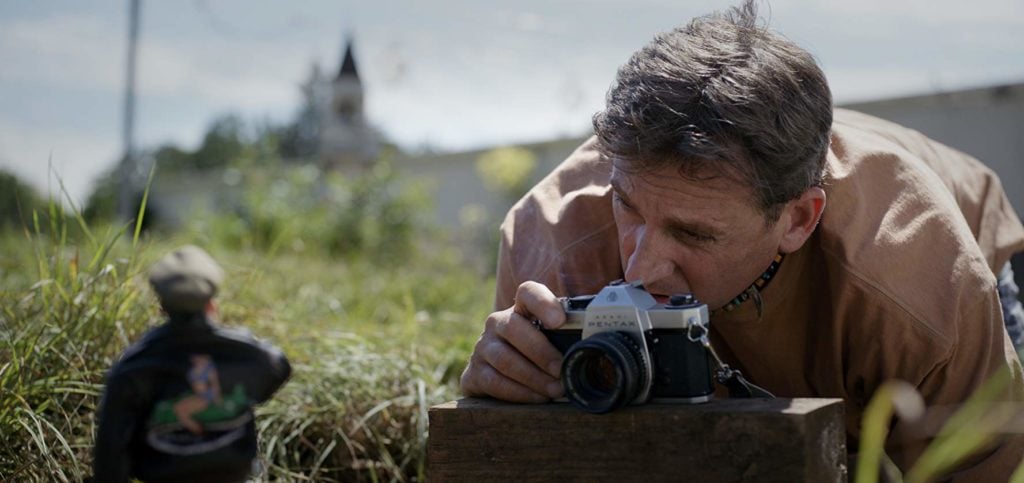
Steve Carell as Mark Hogancamp in Welcome to Marwen. © 2018 Universal Pictures.
In 2000, Hogancamp—at that point 38 years old and an alcoholic—was drinking at the Anchorage, a local bar in Kingston, New York. In the midst of a conversation with a group of young men, he let slip that he liked to wear women’s shoes and nylons. When he left the bar that night, the men were laying in wait: they jumped him, kicking, punching, and stomping his head, leaving him with serious brain damage.
Hogancamp spent nine days in a medically induced coma before waking up to a world he didn’t recognize, having lost his memories of what happened prior to the assault. After a 40-day stay at the hospital and enough physical therapy so that he could relearn to walk and talk, his insurance ran out. “I felt like I’d been kicked out of the tribe of men on planet Earth,” he said in a 2015 interview, recalling his sense that “I have to do something or else this hate and anger is going to build up and kill me.”
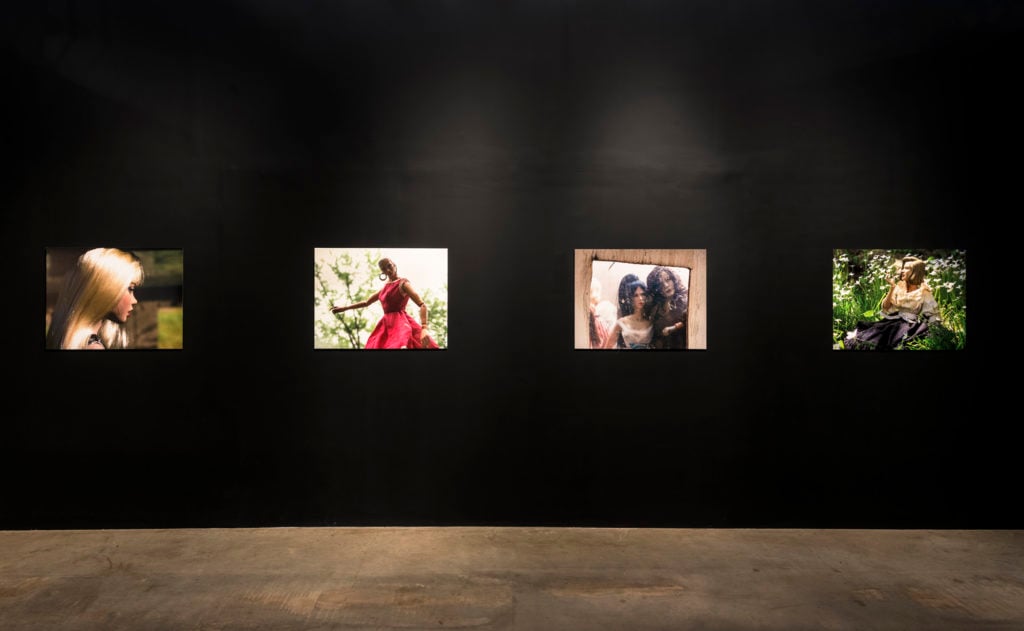
Installation view, “The Women of Marwencol: Mark Hogancamp” at Pioneer Works. © Mark Hogancamp / Artists Rights Society (ARS), New York.
“Everybody at one time or another wishes they had a double that could do the things they could never do,” Hogencamp says in the documentary. So his Marwencol alter ego, Hogie, is a dark, buff, Nicolas Cage lookalike with a rugged scar running down the side of his face. The women in his life are cast as bad-ass Barbie dolls who strut around in stiletto slingbacks and vie for his affections. The Anchorage bar is recast as the Ruined Stocking Cat Fight Club, where the characters drink and dance. (In real life, Hogancamp has lost the taste for alcohol and Hogie runs purely on coffee now, too.) The artist’s mother has a doppleganger—a doll of Pussy Galore, the character in the James Bond film Goldfinger—and there’s even a stand-in for the lawyer who prosecuted Hogancamp’s assailants.
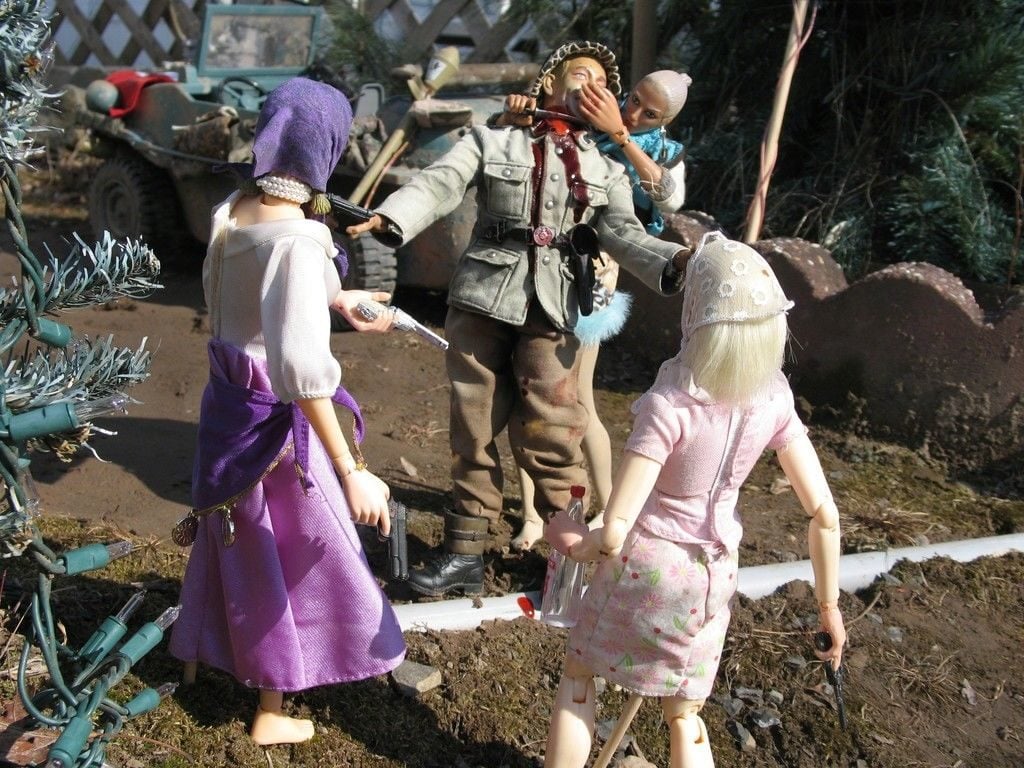
A scene in Mark Hogancamp’s Marwencol. © Mark Hogancamp / Artists Rights Society (ARS), New York.
In the 2010 documentary, lawyer Emmanuel Nneji—who prosecuted Hogancamp’s attackers—held up examples of the artist’s early drawings, which were used as exhibits in the trial as evidence of the skills he had lost. But he soon developed new ways of working. For Marwencol, he turned to crafts kits from a local hobby store and then started taking pictures. The photographs, which he began taking purely as a matter of documentation, later caught the attention of a local Kingston man, who helped Hogancamp’s work get published in the magazine Esopus, which highlights the work of outsider and emerging artists. Then, in 2006, Hogancamp’s art was the subject of a show at the White Columns gallery in New York. One Mile Gallery in Kingston regularly shows his work, and in New York, Allouche Gallery and Pioneer Works have both shown work by the artist.
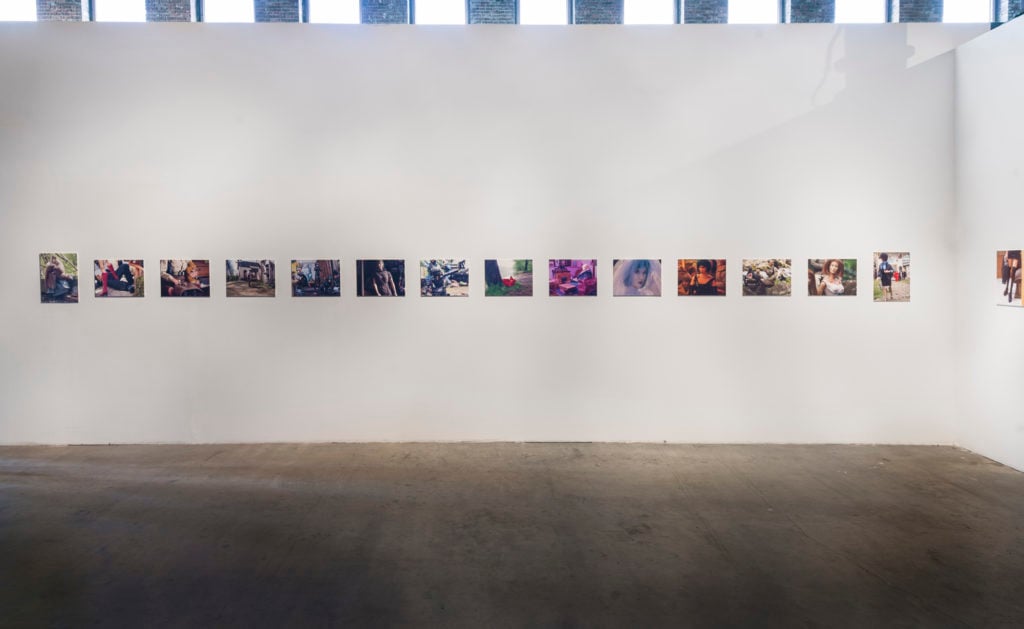
Installation view, “The Women of Marwencol: Mark Hogancamp” at Pioneer Works. Curated by Todd Lippy and Janet Hicks. © Mark Hogancamp / Artists Rights Society (ARS), New York.
Hogancamp’s photograph Rescuing the Major features a muddied soldier struggling to get to safety with an injured comrade on his back. The image—which is full of valor but is also purely fictional—won an Ultimate Soldier photography award. It has also been completely misunderstood. In 2015, a Facebook user posted Hogancamp’s photo with a caption to criticize a recent article about Caitlyn Jenner’s transition, writing: “As I see post after post about Bruce Jenner’s transition to a woman, and I hear words like, bravery, heroism, and courage, just thought I’d remind all of us what real American courage, heroism, and bravery looks like!”

Mark Hogancamp, Rescuing the Major. © Mark Hogancamp / Artists Rights Society (ARS), New York.
Ironically, the viral post featured an image by a cross-dressing artist—using dolls, no less. Just this year, Twitter lit up again when right-wing talking head Kambree Kawahine Koa took to social media to commend American troops on Memorial Day, again using the photograph as an example.
All told, there’s no doubt that Hogancamp’s story and the world he built has all the makings for a cinematic blockbuster. And when the film comes out on December 21, viewers will be able to see for themselves how close the stories align. In the meantime, the excellent documentary is available online. And in January, the artist’s formative work will be shown in the One Mile Gallery booth at the Outsider Art Fair in New York.